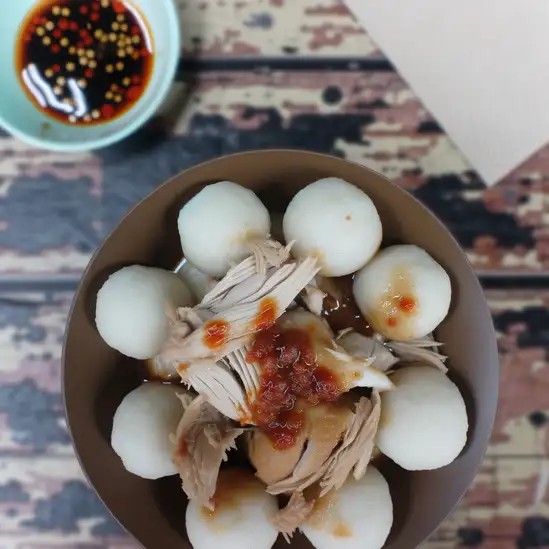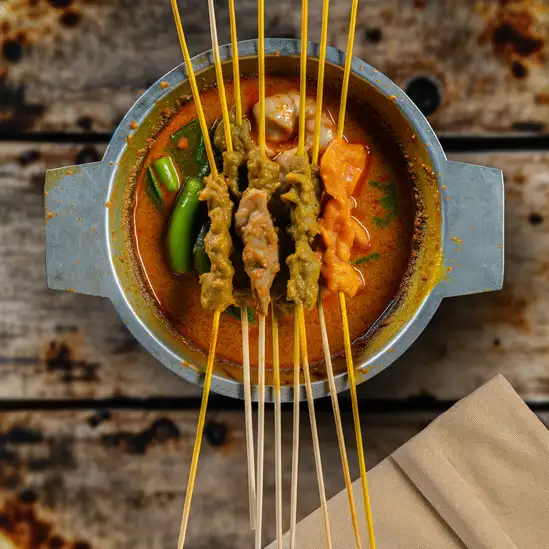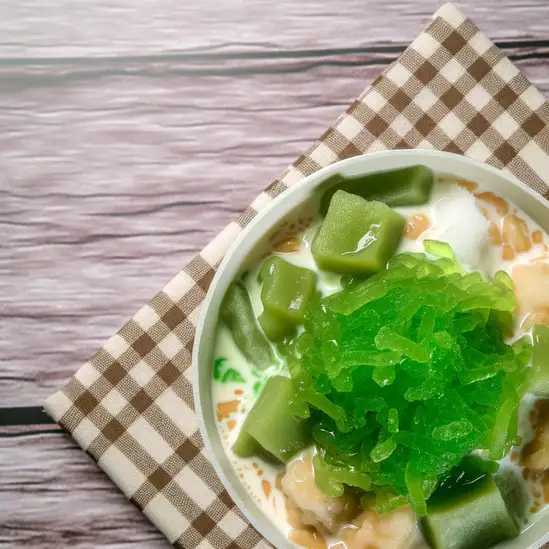


If you ever find yourself wandering through Malacca,you’ll immediately notice how the past and present seem to dance together in the warm,humid air. The city hums with a laid-back charm,where colonial buildings painted in soft pastels line the streets,and the scent of spices and grilled satay drifts from bustling night markets. Walking along the river,you hear the gentle splash of boats and the chatter of locals sharing stories over cups of strong,sweet teh tarik. It’s a place where history isn’t just in museums—it’s alive in the colorful street art,the old Dutch forts,and the mix of Malay,Chinese,and Portuguese influences that flavor everything from the architecture to the food. Speaking of food,Malacca is a feast for the senses. Imagine biting into a crispy,golden chicken rice ball or savoring the rich,tangy kick of a bowl of Asam Pedas,all while the aroma of freshly fried coconut pancakes (apam balik) teases your nose. The city’s vibrant night market is a sensory overload—in the best way—with vendors calling out,lanterns glowing,and the air thick with the smell of sweet palm sugar and smoky barbecues. What really stays with you,though,is the city’s soul. Malacca feels like a warm embrace from a friend who’s eager to share stories of centuries past,while inviting you to create your own memories. It’s a place where every corner holds a surprise,and every moment feels like a gentle invitation to slow down and savor life’s simple pleasures.
The information on this page is currently being reviewed by Tripkliq and should be used as a guide only
Eng word: Hello
Eng pronunciation: Ha-lo
Local language: Halo
Eng word: Goodbye
Eng pronunciation: Se-la-mat ting-gal
Local language: Selamat tinggal
Eng word: Thank you
Eng pronunciation: Te-ri-ma ka-sih
Local language: Terima kasih
Eng word: How much
Eng pronunciation: Be-ra-pa
Local language: Berapa
Eng word: Toilet
Eng pronunciation: Tan-das
Local language: Tandas
Eng word: Help me
Eng pronunciation: To-long sa-ya
Local language: Tolong saya
Eng word: Yes
Eng pronunciation: Ya
Local language: Ya
Eng word: No
Eng pronunciation: Ti-dak
Local language: Tidak
Eng word: Excuse me
Eng pronunciation: Ma-af
Local language: Maaf
The historical city of Malacca was founded in the 14th century by Parameswara, a Sumatran prince who fled from the Majapahit Empire before establishing the Malacca Sultanate.
Malacca prospered under the Malacca Sultanate becoming one of the most important trading ports in Southeast Asia, attracting traders from around the globe.
In 1511, Malacca was conquered by the Portuguese under the command of Afonso de Albuquerque, marking the beginning of European colonial rule in Southeast Asia.
Following their conquest, the Portuguese built A Famosa, a fortress to defend Malacca. Today, the surviving gate, Porta de Santiago, is one of the oldest European architectural remains in Southeast Asia.
In 1641, the Dutch East India Company took control of Malacca from the Portuguese and enhanced the city's infrastructure, leaving a lasting architectural legacy.
The British Empire took control of Malacca in the early 19th century, making it part of the Straits Settlements, along with Penang and Singapore.
Malacca was occupied by the Japanese from 1942 to 1945 during World War II, a period marked by hardship and resistance among the local population.
Malacca, along with the rest of Malaysia, gained independence from British rule on August 31,1957.
In 1989, Malacca was declared a Historical City, reflecting its rich heritage and cultural importance in Malaysian and Southeast Asian history.
In Malacca, the most common Power Adaptor is Type G.


A spicy and tangy noodle soup made with coconut milk, shrimp, chicken, and a variety of herbs and spices. It is a signature dish of the Peranakan culture in Malacca.

Steamed chicken served with rice that has been shaped into small balls. This dish is a popular street food in Malacca and is often served with chili sauce and soy sauce.

A unique Malaccan dish where skewers of raw meat, seafood, and vegetables are cooked in a boiling pot of spicy peanut sauce. It is a popular dish to enjoy with friends and family.

A refreshing dessert made with shaved ice, coconut milk, green rice flour jelly, and palm sugar syrup. It is a popular sweet treat to cool down in the hot weather of Malacca.
Kuala Lumpur feels like a vibrant heartbeat pulsing through the heart of Malaysia—where tradition and modernity dance effortlessly together. The moment you step into the city,you’re greeted by the towering silhouettes of the Petronas Twin Towers piercing the sky,their glass facades shimmering against the tropical sun. But it’s not just the skyline that captivates you; it’s the lively street scenes below. The air buzzes with the chatter of street vendors,the sizzle of satay grilling over open flames,and the sweet aroma of pandan and lemongrass wafting from bustling food stalls.
Walking through neighborhoods like Bukit Bintang or Chinatown,you’ll find a kaleidoscope of colors and sounds—vibrant markets brimming with spices,textiles,and handcrafted trinkets,while the calls to prayer from nearby mosques blend harmoniously with the hum of city life. The city’s rich cultural tapestry is woven from Malay,Chinese,and Indian influences,creating a unique blend you can taste in every bite of nasi lemak or teh tarik.
What I love most is how Kuala Lumpur never feels rushed. Whether you’re sipping kopi at a roadside stall or wandering through the lush greenery of the KL Forest Eco Park,there’s a warm,welcoming energy that invites you to slow down and soak it all in. It’s a city that surprises you at every turn—full of contrasts,flavors,and stories waiting to be discovered.
Imagine stepping into a city where sleek skyscrapers meet lush greenery,and every corner hums with a vibrant energy that’s both modern and deeply rooted in tradition. That’s Singapore for you—a place where the air carries the fragrant mix of blooming orchids and sizzling street food,and the streets buzz with a blend of languages and laughter. Walking through neighborhoods like Chinatown or Little India,you’ll catch the rich aromas of spices mingling with the sweet scent of tropical fruits,inviting you to explore further.
What’s truly captivating about Singapore is how effortlessly it balances the fast-paced pulse of a global hub with pockets of serene beauty. You can be wandering through the futuristic Gardens by the Bay one moment,marveling at the towering Supertrees glowing softly at dusk,and the next,find yourself savoring a bowl of laksa or chili crab at a bustling hawker center,surrounded by locals chatting animatedly. The city’s character shines through its people—warm,diverse,and proud of their heritage,yet always welcoming.
There’s a rhythm here that’s both energizing and comforting. Whether you’re cycling along the waterfront,catching a sunset over Marina Bay Sands,or simply sipping kopi in a cozy café,Singapore invites you to slow down and soak in its unique blend of cultures,flavors,and sights. It’s a city that surprises you with its layers,making every visit feel like a new discovery.
If you wander into George Town,Malaysia,you’ll immediately feel like you’ve stepped into a living canvas where history and modern life dance together effortlessly. The streets hum with a gentle buzz—motorbikes weaving past colorful shophouses,the chatter of locals blending with the clatter of street vendors setting up their stalls. There’s a warmth in the air,not just from the tropical sun but from the genuine smiles of people who clearly love their city.
As you stroll through the narrow lanes,your senses come alive. The scent of freshly fried char kway teow mingles with the earthy aroma of kopi brewing in tiny coffee shops. Walls burst with vibrant street art that tells stories of the city’s rich multicultural heritage—Chinese,Malay,Indian,and more—all coexisting in a beautiful patchwork. You can almost taste the history in the air,from the colonial architecture to the centuries-old temples tucked between modern cafes.
What makes George Town truly special is its soul. It’s a place where tradition isn’t stuck in the past but woven into everyday life. Whether you’re savoring a bowl of laksa at a hawker stall or chatting with an artist in a cozy gallery,you feel connected to something authentic and alive. It’s a city that invites you to slow down,explore with curiosity,and fall in love with its stories,one flavorful bite and colorful corner at a time.
Bangkok is one of those cities that grabs you the moment you step out into its bustling streets. There’s this electric energy in the air—a mix of honking tuk-tuks,sizzling street food stalls,and the chatter of locals weaving through markets. The city feels alive,like it’s constantly moving and breathing,yet somehow it balances this chaos with moments of serene beauty,like the golden spires of temples catching the afternoon sun or quiet canals reflecting the sky.
Walking through Bangkok,you’ll be hit by a whirlwind of scents:fragrant jasmine from flower vendors,the sharp tang of lemongrass and chili from street carts,and the sweet aroma of mango sticky rice tempting you at every corner. The colors are just as vivid—neon signs flicker alongside traditional wooden shophouses,and monks in saffron robes glide past modern skyscrapers. It’s a city where old and new dance together effortlessly.
What really makes Bangkok special is its warmth and openness. The people here have a genuine kindness that shines through,whether you’re bargaining at Chatuchak Market or sharing a laugh over a bowl of spicy boat noodles. The culture is rich and layered,from the intricate rituals at Wat Pho to the lively festivals that light up the streets. Visiting Bangkok feels like stepping into a story that’s still unfolding,full of surprises and moments that stay with you long after you leave.
Imagine stepping into a place where the air hums with the gentle rhythm of waves lapping against sun-warmed shores,and the scent of salty sea mingles with fragrant street food stalls. That’s Phuket for you—a vibrant island that feels alive in every sense. It’s not just the stunning beaches that grab you,but the way the island pulses with a laid-back energy,where colorful markets buzz with chatter and the aroma of grilled seafood fills the air. Walking through the old town,you’ll find charming Sino-Portuguese buildings painted in pastel hues,their shutters creaking softly in the tropical breeze,while tuk-tuks zip by,adding a playful soundtrack to your explorations.
Phuket’s character is a beautiful blend of tradition and liveliness. Temples with golden spires peek out from lush greenery,inviting quiet moments of reflection,while nearby,night markets burst with life—vendors calling out,sizzling woks,and the sweet tang of mango sticky rice tempting your taste buds. The island’s culture is warm and welcoming,with locals who smile easily and share stories over cups of strong Thai coffee or fresh coconut water.
What makes Phuket truly special is how it wraps you in its embrace—whether you’re watching a fiery sunset from a cliffside bar,diving into crystal-clear waters teeming with vibrant marine life,or simply savoring the spicy kick of a freshly made curry. It’s a place that invites you to slow down,soak in the colors,sounds,and flavors,and leave with a heart full of unforgettable moments.
Bali feels like stepping into a vibrant dream where every corner pulses with life and warmth. From the moment you arrive,there’s this unmistakable energy—part spiritual,part playful—that wraps around you like a soft,tropical breeze. Imagine waking up to the gentle rustle of palm leaves and the distant sound of waves crashing against volcanic black sand beaches. The air carries a mix of frangipani blossoms and salty sea spray,instantly grounding you in the island’s natural beauty.
What really makes Bali special is its rich culture woven into everyday life. You’ll see locals in colorful sarongs offering flowers at temple steps,hear the rhythmic beat of gamelan music drifting through the air,and catch glimpses of intricate wood carvings and vibrant paintings in small artisan shops. The island’s spirituality isn’t just something you observe—it’s something you feel,a quiet presence that invites you to slow down and connect.
And then there’s the food—oh,the food! Freshly grilled satay,fragrant nasi campur bursting with spices,and tropical fruits so sweet they almost taste like candy. Whether you’re dining in a bustling market or a cliffside café overlooking the ocean,every bite feels like a celebration of Bali’s rich flavors and traditions. Honestly,Bali isn’t just a place you visit; it’s a place that stays with you,long after you’ve left.
Tourists may encounter vendors selling counterfeit products, such as branded clothing, accessories, and electronics, at seemingly low prices. These items are often of poor quality.
Individuals may pose as representatives of charities and solicit donations from tourists. These charities are often fake, and the money goes directly to the scammer.
Unlicensed tour guides may approach tourists offering guided tours at inflated prices. They may provide inaccurate information or take tourists to commission-based shops.
Some shops may charge tourists significantly higher prices for souvenirs compared to locals. It's advisable to compare prices and shop around before making a purchase.
Crowded tourist areas, such as Jonker Street, are hotspots for pickpockets. Tourists should be vigilant and keep their belongings secure.
Scammers may set up street gambling games that are rigged to ensure tourists lose money. These games often involve sleight of hand and are designed to deceive.
Some taxi drivers may not use the meter and charge exorbitant fares, especially for tourists. Always insist on using the meter or agree on a fare before starting the journey.
Tourists may be approached with offers for free gifts or discounted tours in exchange for attending a timeshare presentation. These presentations can be high-pressure sales tactics for overpriced timeshares.
Malaysia has very strict drug laws, and this includes Malacca. Possession, use, or trafficking of illegal drugs can result in severe penalties, including long prison sentences, heavy fines, and even the death penalty for trafficking. Tourists should avoid any involvement with illegal drugs to stay within the law and ensure their safety.
In Malacca, Malaysia, smoking is prohibited in many public places, including air-conditioned restaurants, public transportation, government buildings, and educational institutions. There are designated smoking areas where smoking is allowed. Violators can face fines. Tourists should look for 'No Smoking' signs and adhere to local regulations to avoid penalties.
Vaping is subject to similar regulations as smoking in Malacca. It is banned in most public places, including restaurants, public transportation, and government buildings. Designated vaping areas may be available. Tourists should be cautious and look for signs indicating where vaping is prohibited to avoid fines.
What are other people saying about Malacca?
Recent Social posts about Malacca
There is nothing to show you for now.